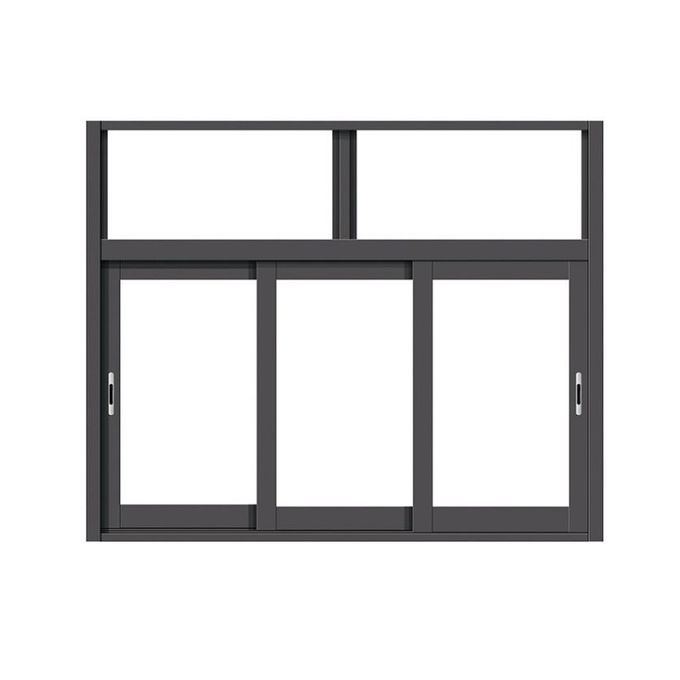Windows are an essential part of constructing and designing a building, and, therefore, the selection of the right materials can be a very delicate process that determines the appearance and functionality of the house. Of all the available options, the aluminium profiles for windows are one of the most preferred for contemporary constructions, whether for commercial or residential use. Aluminium window profiles are favorably known for their strength, versatility, and the fact that they appear to be slim, which makes it an input to modern construction.
What are Aluminium Profiles
Aluminium profiles are long pieces composed of aluminium material that are formed through extrusion or profiling. These profiles are used in the production of window frames, door frames, and other construction work. The process of extrusion is where the aluminium is melted and then put through a cross-sectional shape. This makes it possible to design complex patterns and be confident that the profile created is strong, and, at the same time, has a good look.
Benefits of Aluminium Profiles
- Durability and Strength- Strength and durability are the key benefits that aluminium profiles have as compared to other materials. Aluminium is a non-ferrous metal which makes it especially useful in various regions or near the seas where moisture and salty air can cause rusting of the other materials. Aluminium framing does not rot, split, or discolour so the frames do not warp, crack, or fade away within the years that they are used. The fact that aluminium is a very strong material, the windows can be of a greater size with slender profiles. This is not only good for the looks but also for the quantity of natural light that can be let in a particular area.
- Low Maintenance- Aluminium windows do not need much maintenance as compared to other types of windows such as wooden or steel windows. Aluminium does not require to be painted or treated frequently to avoid the negatives of decaying wood. Anyone can easily clean the aluminium window frames with water and a mild detergent. Powder-coated or anodized aluminium profile guarantees that the frames remain coloured and glossy for a long time despite tough environmental factors.
- Energy Efficiency- Current aluminium window frames are made with energy conservation as one of its core considerations. In the recent past, with advancements in thermal break, it is feasible to get the heat transmission of aluminium frames down. A thermal break is a non-heat-conducting material that is utilized in the design of the structure to prevent conduction between the inside and outside layers. This assists in regulating indoor climate and usage of energy, which results in low expenses on charges. Moreover, energy-efficient glass, when used with aluminium windows, can be of enormous benefit in enhancing the energy factor of any building. This is more so in the current world, where energy conservation and the use of green energy are of paramount importance.
- Aesthetic Flexibility – Aluminium has a very low resistance to bending, and thus the profiles can be bent into any design and aesthetic sense. They come in many colors, and they may be powder-coated or anodized, which gives them a hard and long-lasting surface. There are many different types of windows that architects and homeowners can decide to use in their buildings; these include, casement windows, sliding windows, tilt and turn, and the like. It is therefore easy to have the windows match the design of the building. Aluminium frames are also thin, which provides a modern appearance since the extent of visibility is limited. Slender profiles provide more space for the glass, thus providing more transparency about the outside environment and a feeling of openness in interior design.
- Environmental Advantages- Aluminium is an environmentally friendly material, as it can be recycled. The method used to recycle the aluminium is far more efficient and consumes less energy than that used to produce fresh aluminium. Choosing aluminium profiles for windows enables one to reduce the emission of carbon in the environment,, which is very important in the construction industry.
Aluminium vs. Others
- Aluminium vs uPVC: Although, like aluminium, uPVC is not very hard to maintain, it in no way can compare to the sturdiness of aluminium. A second disadvantage of using uPVC frames is that they become brittle over time especially when exposed to extreme climatic conditions. Aluminium, however, holds its strength and appearance for decades making it to be referred to as the ‘Durability’ element.
- Aluminium vs Wood: The wooden frames for windows look very traditional, but they demand regular treatment to avoid rotting, warping, or insect damage. Aluminium offers a contemporary solution which is not plagued by such problems but offers a great degree of design freedom.
- Aluminium vs Steel: The steel frames are better in strength than the wooden ones but they are more likely to be affected by rust and corrosion. They also weigh more than aluminium and therefore are relatively more expensive in terms of maintenance. Aluminium gives the same amount of strength as steel without the disadvantage of rusting and therefore is more appropriate for all uses.
Conclusion
Aluminium profiles for windows have been adopted widely by architects and homeowners for the following reasons: they are strong, durable, easy to maintain, energy efficient, and can be designed in any style. Advanced technology in the manufacturing of aluminium frames makes these profiles not only aesthetic and functional in buildings but also contribute to environmental conservation through energy-efficient frames. Aluminium skirting profiles are the best investment that you can make for your home, whether it is for aesthetic value or physical value such as weather conditions or energy efficiency, among other aspects.







